A special display of the Anthropocene exhibition
We invite you to a special screening of the Anthropocene exhibition organized by the Narodowy Instytut Architektury i Urbanistyki in cooperation with The Academic Design Center and the Łódź Design Festival.
Architecture – durable, useful, beautiful and… incredibly harmful. The construction industry and life-cycle costs generated by buildings are responsible for over ⅓ of world CO2 emissions – one of the main causes of climate change.
Cities and buildings nowadays operate in a way that disturbs nature’s cycles, pollutes and devour vast areas of land. On the other hand, humans are unable to function outside of the built environment. Architecture provides proper and safe living conditions, creates spaces of everyday existence for numerous people all over the world.
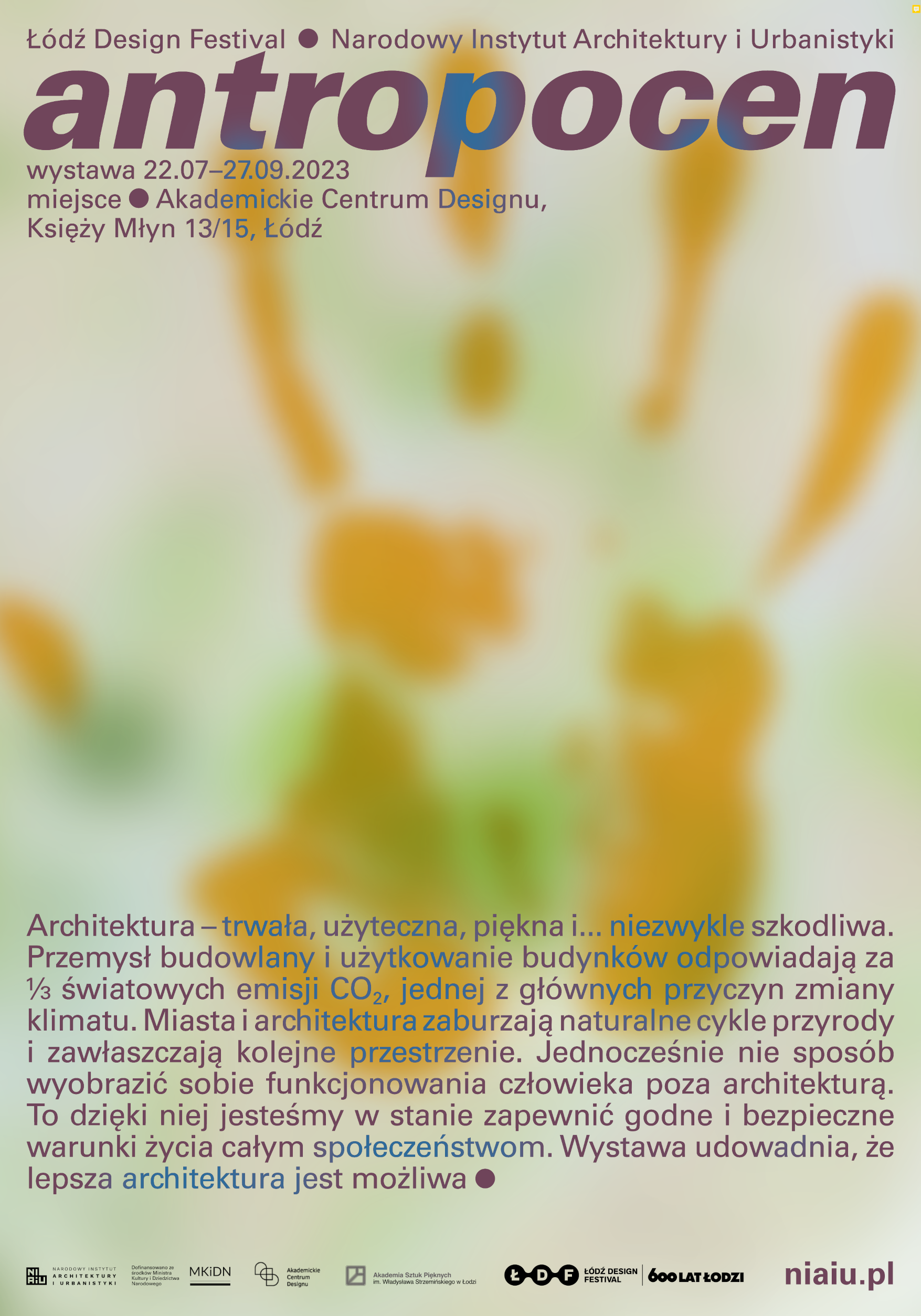
The anthropocene is an era of humans, an era of anthropogenic changes that result in global climate catastrophe. The name of this exhibition signifies ambivalence – it is both narcissistic (what we present is testament to the human power) and critical towards the current state of the world. We do not, however, intend to instill hopelessness in our visitors. We can still stop (or rather limit) the destruction of our collective home. The exhibition is structured around the doughnut economics diagram – a compass for the 21st century. The interior of the doughnut is delimited by the social foundation – minimal appropriate living conditions, the external limit marks the ecological ceiling – the planetary boundaries in landscape, biodiversity, water, climate, land transformation and pollution, whose transgression causes irreversible damage to the natural world. Safe and just space for humanity is encapsulated between these two boundaries. It is there that we believe architecture would best fulfill its purpose.
The mosaic of examples presented in this exhibition delineates the context of current challenges in face of the climate crisis, allowing us to better understand the trials that lie ahead. We see architecture not only as an effect of global and local changes in the relationship between humans and nature, but also as a tool that shapes it. We present contemporary and historical designs, completed projects and technologies that impact the habitats of all species and beings. Installations in each ecological category offer us a look into architecture’s future and the roles it can play. Their authors looked for methods of architectural design and functionality that go beyond being not harmful to the planet and towards a regenerative environmental impact. These examples prove that there is another way for architecture.
Catalog accompanying the exhibition
The exhibition is accompanied by a catalog that broadens the context of the economy of obwarzanek – a reference to the realities of Polish cities gives it a practical dimension. Essays by specialists in six fields outline the context in which the artists we invited created their speculative installations about the future of regenerative architecture. In the last part of the book, we describe social and political moods, changes in professions, language and politics, pointing out that architecture is only one of many emanations of global processes that affect man, climate and the future of the planet. The catalog in the English language version will be released during the exhibition at the Museum of Architecture in Wrocław.
Publishing house edited by Kacper Kępiński and Adrian Krężlik.
Managing editor: Karolina Andrzejewska-Batko.
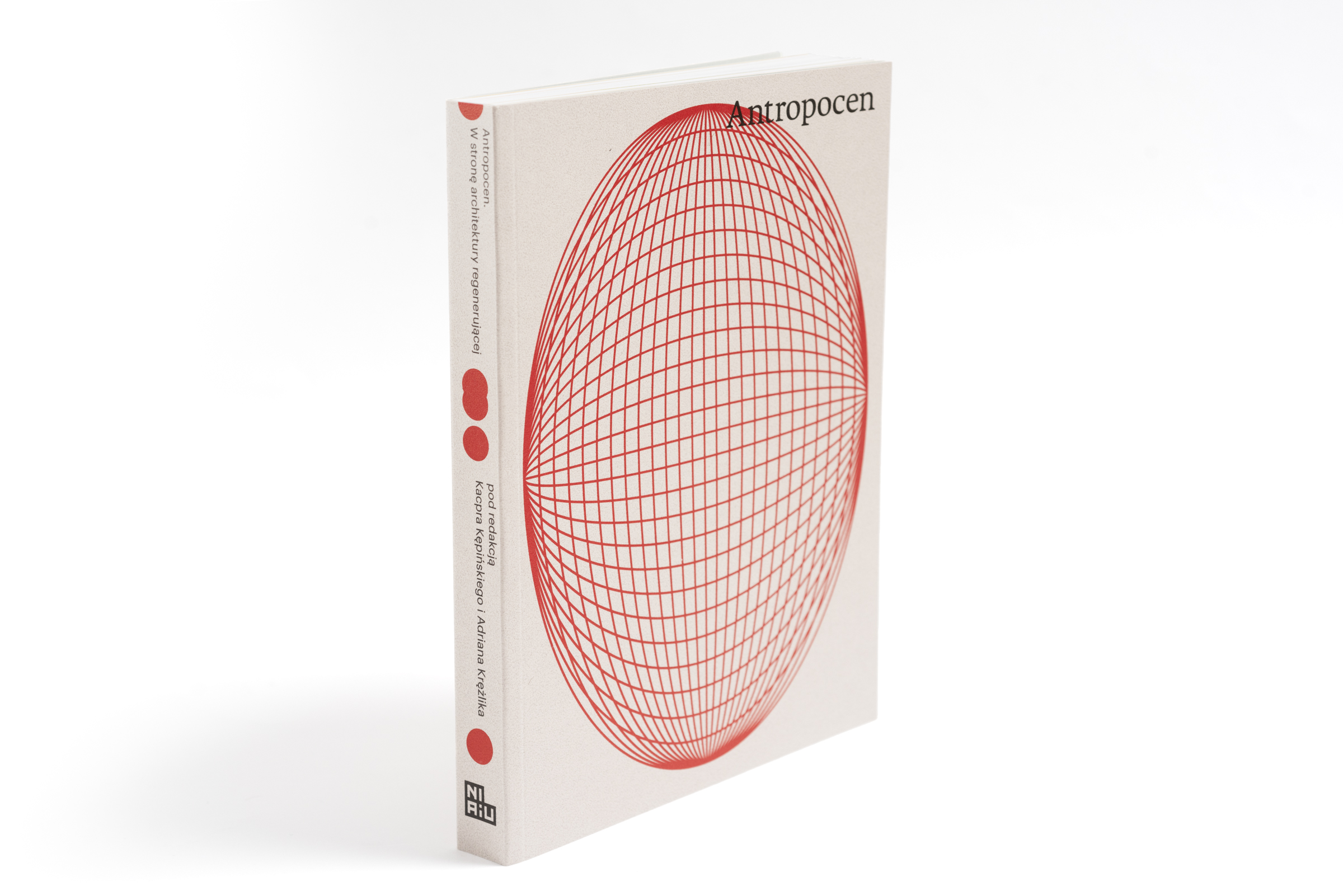
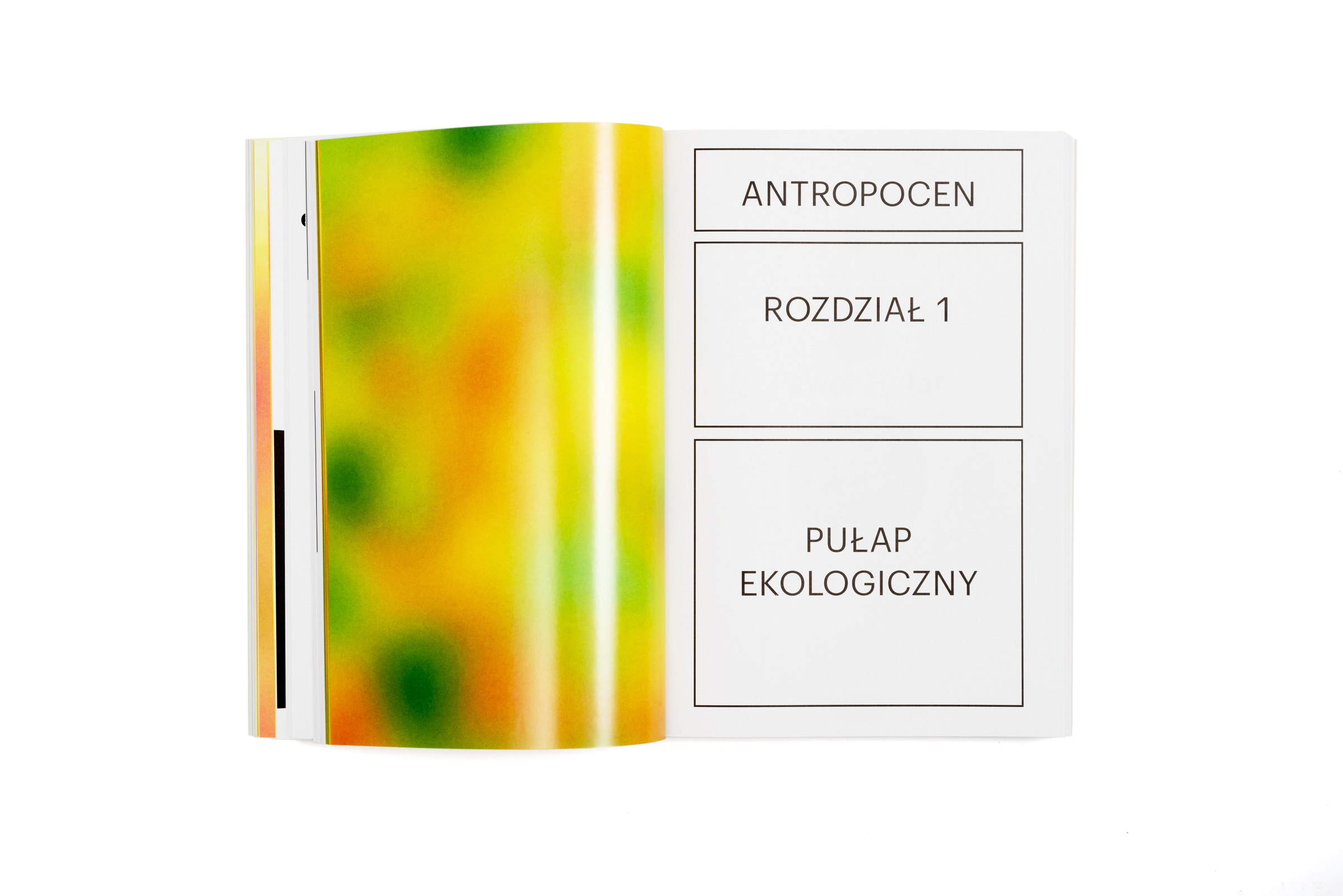
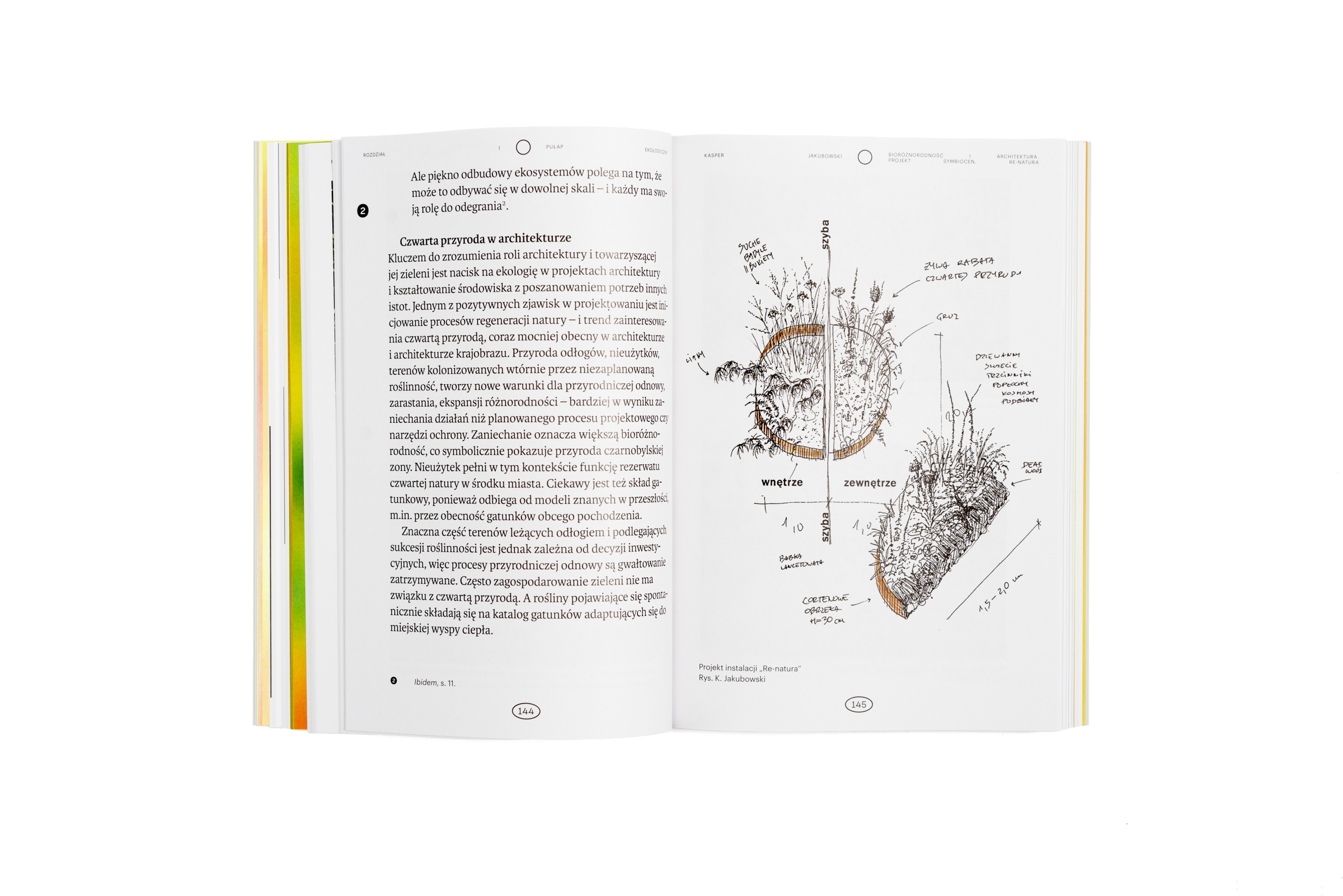
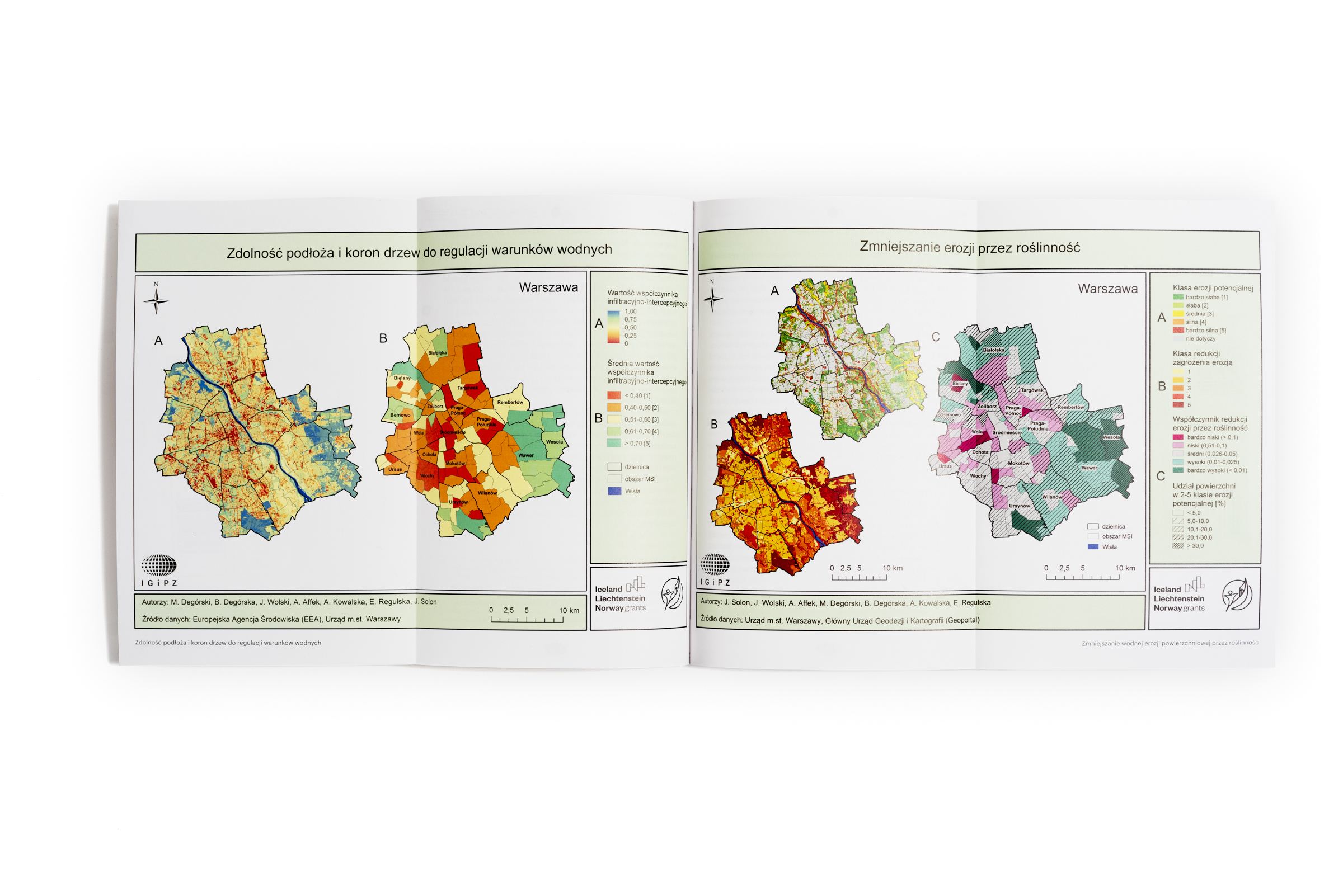
Organizer: Narodowy Instytut Architektury i Urbanistyki
Co-organizer: Łódź Design Festival, The Academic Design Center
Scientific curator: Prof. dr hab. arch. Bolesław Stelmach
Curators: Kacper Kępiński, Adrian Krężlik
Participants: Pracownia Architektury Krajobrazu (Marta Tomasiak, Marta Przygoda), Centrala (Małgorzata Kuciewicz, Simone De Iacobis), Miastopracownia (Barbara Nawrocka, Dominika Wilczyńska), Kasper Jakubowski, Jan Szeliga i Krzysztof Janas, NAS-DRA (Paulina Grabowska, Oliwia Rybczyńska), Jan Domicz, Simone Ruess, BIEL studio (Zofia Strumiłło-Sukiennik, Grzegorz Piotrowicz)
Exhibition architecture: Centrala (Małgorzata Kuciewicz, Simone De Iacobis)
Visual identity: Katarzyna Nestorowicz
Graphic design of exhibition: Jerzy Gruchot (Full Metal Jacket)
Production: Weronika Sołtysiak
Accompanying program: Łódź Design Festival / The Academic Design Center
Realization of the exhibition: Muh Crew (Jakub Henke, Łukasz Kowalski, Marcelina Dereń, Łukasz Rosiek, Paweł Łasiński, Radosław Jagucki, Kacper Kobus, Piotr Cwaliński, Michał Szulżyk, Krzysztof Mędrek, Kuba Puchatkiewicz)
Models: Onimo – makiety architektoniczne
Collaboration: Muzeum Sztuki Nowoczesnej w Warszawie, Warbud SA, Dominika Dragan-Alcantara, Dorota Leśniak-Rychlak (współpraca redakcyjna / editorial collaboration), Aga Sukienniczak (współpraca kuratorska / curatorial collaboration), Adobe Stock, Agencja Wyborcza.pl, Alamy, Archiwum Architektury Hassana Fathy’ego, Amerykański Uniwersytet w Kairze, Archiwum Fundacji Ośrodka KARTA, East News, Forum Polska, Fundacja Polskiej Sztuki Nowoczesnej, Agencja Fotografów, Galeria Le Guern, Grupa ZPR Media, Jakub Rodziewicz, Jan Domicz, Jan Goots, Karol Żurawski, Krzysztof Kalisz/OperatorKamery, Marcin Czechowicz, Michał Młynarczyk, Muzeum Akademii Sztuk Pięknych w Warszawie, Paweł Skowera, Polska Agencja Prasowa, Robert Fishman, Simone Ruess, Smith Archiwum, Tomasz Czernicki, Tomasz Kiełkowski Archifoto.
lease be advised that the Narodowy Instytut Architektury i Urbanistyki has made every effort to find all owners of copyrights to the works presented at the exhibition.
The organizer of the exhibition would also like to thank all the people and institutions that contributed to the creation of the exhibition.
Co-financing from the Minister of Culture and National Heritage.
Partners: Academy of Fine Arts in Łódź, City of Łódź
Duration: 22.07-27.09.2023
Vernissage: 21.07.2023, 6:00 p.m.
Place: P0_The Academic Design Center, Księży Młyn Str 13/15, Łódź (entrance from Księży Młyn Str)
Free entrance






